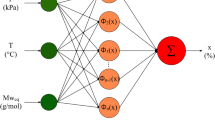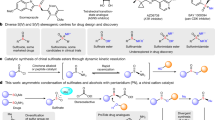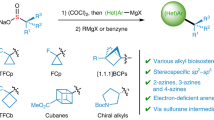Abstract
EARLY studies1 of the metabolism of the polycyclic hydrocarbon 3 : 4 benzypyrene showed that this compound was converted within mouse and rat tissues to one or other of two water-soluble derivatives. These were characterized physically, but not chemically identified, and for convenience in later work were labelled as BpX 1 and BpX 2.
This is a preview of subscription content, access via your institution
Access options
Subscribe to this journal
Receive 51 print issues and online access
$199.00 per year
only $3.90 per issue
Buy this article
- Purchase on SpringerLink
- Instant access to full article PDF
Prices may be subject to local taxes which are calculated during checkout
Similar content being viewed by others
References
Weigert, F., and Mottram, J. C., Cancer Res., 6, 97 (1946).
Calcutt, G., and Payne, S., Brit. J. Cancer, 8, 554, 561, 710 (1954).
Calcutt, G. (unpublished results).
Harper, K. H., Brit. J. Cancer (in the press).
Bernstein, S., and McGilvery, R. W., J. Biol. Chem., 198, 195 (1952).
De Meio, R. H., Wizerkaniuk, M., and Fabiani, E., J. Biol. Chem., 203, 257 (1953).
Dutton, G. J., and Storey, I. D. E., Biochem. J., 57, 275 (1954).
Strominger, J. L., Kalckar, H. M., Axelrod, J., and Maxwell, E. S., J. Amer. Chem. Soc., 76, 6411 (1954).
Dutton, G. J., Biochem. J., 64, 693 (1956).
Author information
Authors and Affiliations
Rights and permissions
About this article
Cite this article
HARPER, K., CALCUTT, G. Glucuronide and Sulphate Conjugation in vivo and in vitro . Nature 183, 463 (1959). https://doi.org/10.1038/183463b0
Issue date:
DOI: https://doi.org/10.1038/183463b0



